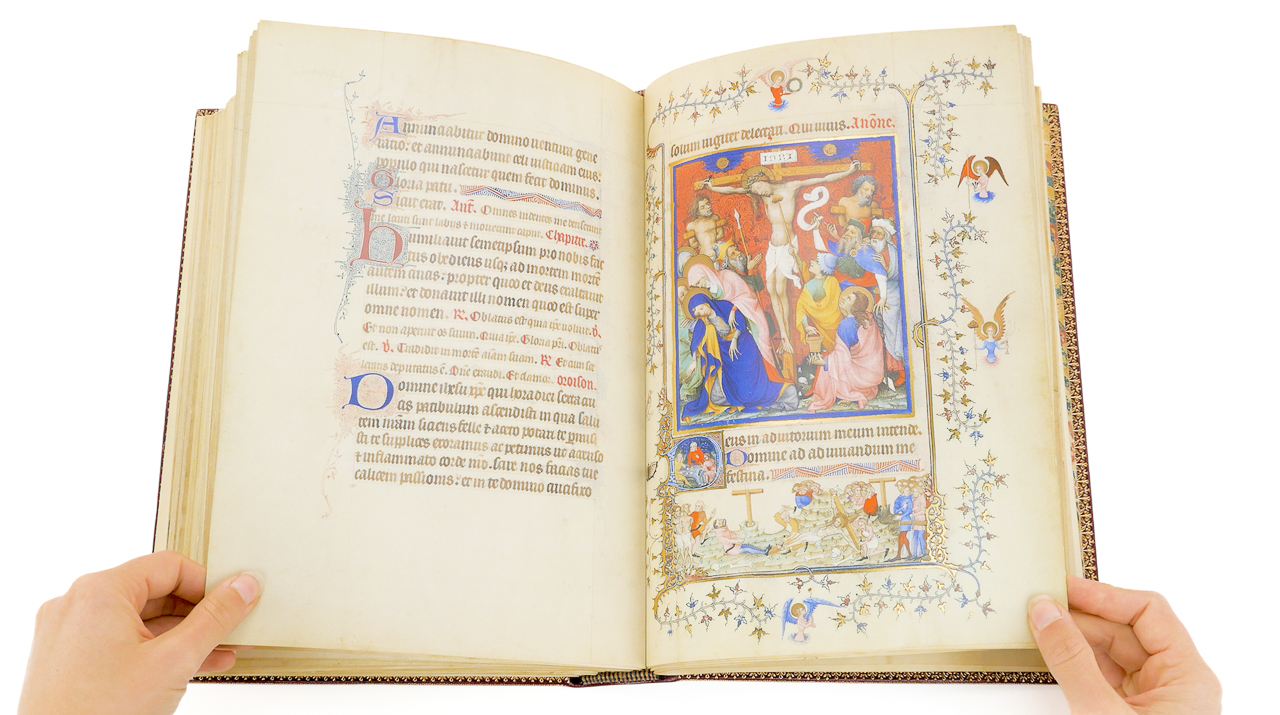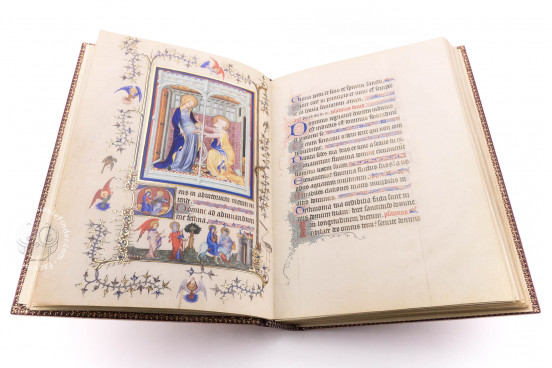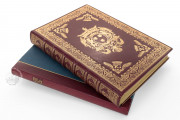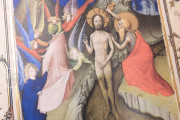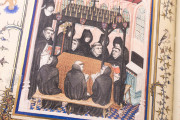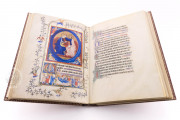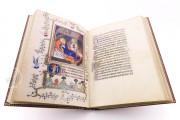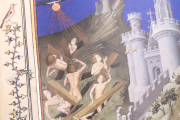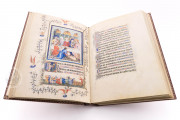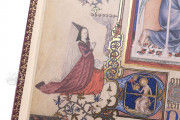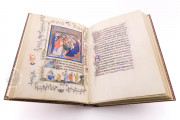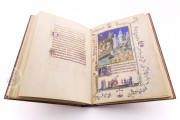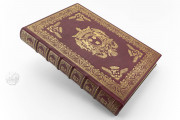A monument among the superlative manuscripts amassed and patronized by the renowned bibliophile Jean of France (1340-1416), Duke of Berry, the Très Belles Heures de Notre-Dame was part of the most ambitiously complex masterpiece of northern European bookmaking of the turn of the fifteenth century. Painted in Paris and Bourges in vivid colors and generously highlighted in gold, its twenty-five large miniatures are framed atop four lines of text initiated by a historiated initial.
Illuminated using the richest materials, each of the thirty-one major divisions of the manuscript's Christian devotional Latin text originally opened with an elaborate three-quarter-page miniature, twenty-five of which survive. The lower margins of the pages with miniatures feature further scenes often elaborating the theme of the miniature. The images are unparalleled in their richness and virtuosity.
The Work of Many Illuminators
This remarkably lavish manuscript was originally conceived as a creative compendium of more than 800 pages of devotional texts. Work began in the last decade of the fourteenth century, and many illuminators were involved in this first stage. The Master of the Parement of Narbonne—probably the French king's valet de chambre Jean d'Orléans—was one of these artists. He painted ten of the large miniatures, with an associate and assistants being responsible for the accompanying bas-de-page scenes (those in the lower margins) and the historiated initials.
After a hiatus of a few years, work began again around 1399. Involved at this stage were Herman and Willem Maelwael, who mostly painted on preliminary drawings made by the Parement Master's team.
Inspiring Illumination
Following another hiatus, work resumed on the manuscript's paintings. One or more of the renowned Limbourg brothers—Pol, Jean, and Herman—were engaged at this time in painting two miniatures (pp. 225 and 240) atop underdrawings made during the earlier campaign. Not only did the Limbourg brothers contribute to the project, but they also studied the book closely and used compositional elements of its miniatures in their later work.
The pictorial compositions for the Parement Master's miniatures of the Wedding Feast at Cana (p. 68) and the Office of the Dead (p. 104) inspired the corresponding scenes in the duke's Grandes Heures of 1409.
The Work of Two Scribes
The Latin payers with rubrics mostly in French of the Très Belles Heures were copied by two scribes, both writing in the script conventionally used for liturgical and devotional texts of the period, Gothic Textualis. The first was Jean L'Avenant, who had already written books for French royalty before taking on this commission. He was responsible for the Hours of the Virgin, the Penitential Psalms, the litany, and the Office of the Dead (pp. 1-154). The second scribe copied the prayers of the Passion, the Office of the Holy Spirit, the Hours of the Passion, and further prayers (pp. 155-239).
A Complicated Early History
The Très Belles Heures de Notre-Dame is only a portion of a much larger devotional book project. In 1412, the duke gave what came to be the manuscript now in Paris to Robinet d'Estampes, his garde des joyaux (keeper of treasures) from 1402 to 1416. The other portion is conventionally called the Turin-Milan Hours, confusingly a name sometimes given to the larger original project.
An Illustrious History of Ownership
Robinet's son, also Robinet, probably gave the manuscript to his wife Marguerite de Beauvillier. Her arms appear below two images of a woman kneeling in prayer (pp. 2 and 155), the product of modifications to the existing illumination made around the time of the marriage in 1438.
The manuscript was owned by Philippe-Charles d'Estampes, Jeanne-Marie du Plessis-Châtillon, and Victor de Saint-Mauris (1797-1867), before being acquired by Adolphe de Rothschild (1823-1900). His grandson, Maurice de Rothschild (1991-1957), donated it to the Bibliothèque nationale in the 1950s.
We have 1 facsimile edition of the manuscript "Très Belles Heures de Notre-Dame": Très Belles Heures de Notre-Dame facsimile edition, published by Faksimile Verlag, 1992
Request Info / Price
